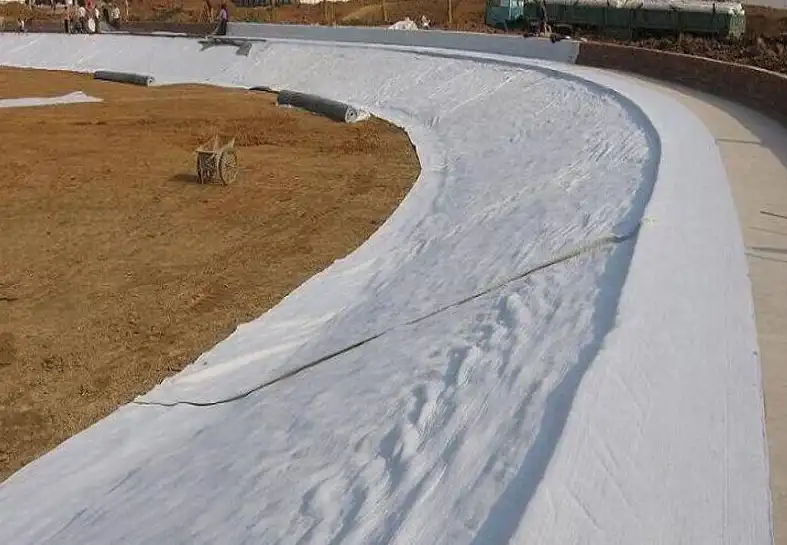
Composite geomembrane (composite anti-seepage membrane) is divided into one fabric one membrane and two fabrics one membrane, with a width of 4-6 meters and a weight of 200-1500g/square meter. It has high physical and mechanical performance indicators such as tensile resistance, tear resistance, and top breaking. The product has high strength, good elongation performance, and large deformation modulus.
Composite membrane, composite geotextile, composite geotextile, composite anti-seepage membrane, composite waterproof fabric, and so on are just different names. In fact, they are all the same product, and composite membranes are widely used, including artificial lake composite membranes. Tunnel composite membrane, pool composite membrane, river composite membrane, dam composite membrane, and so on.
Generally, composite membranes are chosen for artificial lakes, and most use two cloths and one membrane, with 900g-1200g being the majority.
Composite geomembrane used for environmental sanitation solves the problem of environmental pollution caused by urban solid waste, and can avoid continuous pollution to the environment. Hydraulic engineering is used for dam foundation consolidation, drainage boards for groundwater drainage, drainage and pressure reduction. Various anti-seepage projects such as consolidation and drainage of soft soil foundation in municipal construction projects.
Composite geomembranes are commonly used for anti-seepage treatment of embankments, drainage ditches, and waste disposal sites. Function: anti-seepage and partition. Usage: earth dam, rockfill dam, masonry dam, and compressed concrete dam; Horizontal anti-seepage cover in front of embankment and dam, vertical anti-seepage layer of foundation; Tailings dam, sewage dam body and storage area; Construction cofferdam; The widespread application of composite geomembranes in channels and storage tanks has also played a protective role in the ecological environment.
.png)
.png)












